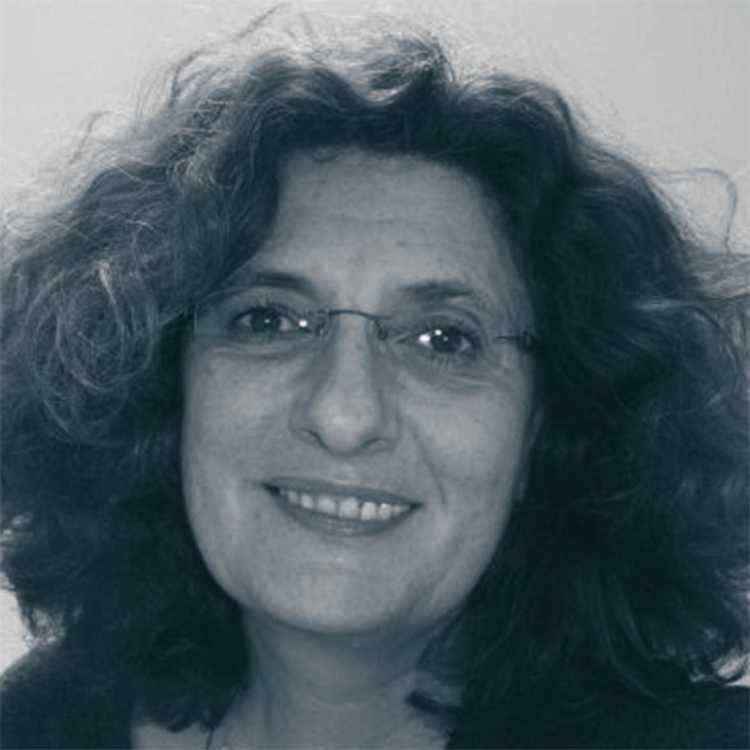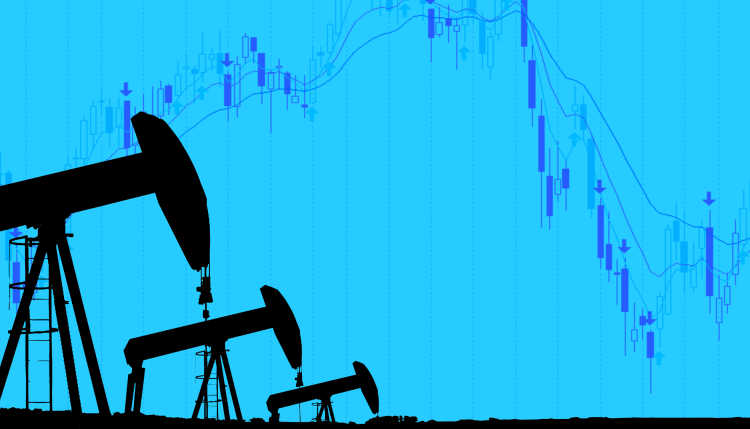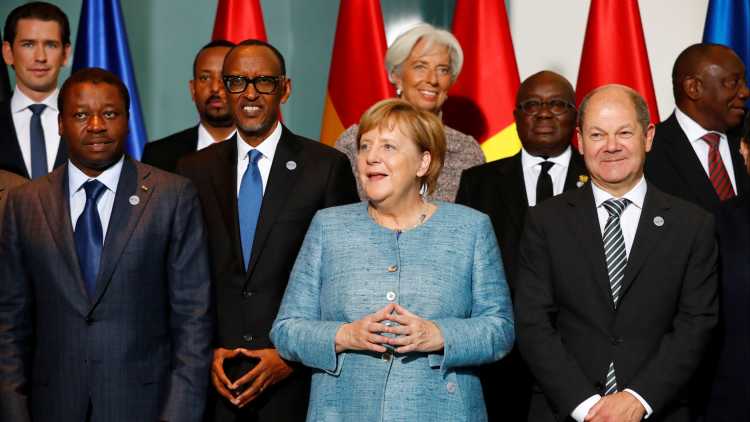- Startseite
- Publikationen
- GIGA Focus
- Aramco Goes Public: The Saudi Diversification Conundrum
GIGA Focus Nahost
Aramco geht an die Börse: Saudi-Arabiens Diversifikationsproblem
Nummer 5 | 2019 | ISSN: 1862-3611

Die staatliche Ölgesellschaft Saudi Aramco wird Anfang Dezember 1,5 Prozent ihrer Aktien an der Börse in Riad platzieren. Der lang erwartete und oft aufgeschobene Börsengang markiert einen Eckpfeiler der Diversifikationsstrategie des saudischen Kronprinzen und De-facto-Herrschers Muhammad bin Salman. Er kommt zu einem Zeitpunkt, in der die Ölpreise infolge der US-amerikanischen Schieferölrevolution auf einem moderaten Niveau verharren und mittelfristig zudem von der Energiewende und der zunehmenden Elektromobilität beeinflusst werden.
Der Börsengang ist unterhalb einer Marktkapitalisierung von 2 Billionen USD angesetzt, einer Summe, die Muhammad bin Salman ursprünglich als Ziel vorgegeben hatte. Mit einer jetzt zu erwartenden Bewertungsspanne zwischen 1,6 bis 1,7 Billionen USD würde Aramco weiterhin mit Alibaba (25 Mrd. USD) um den Spitzenplatz beim weltweit größten Börsengang aller Zeiten konkurrieren.
Saudi Aramco ist der weltweit kostengünstigste Ölproduzent mit relativ geringen Treibhausgasemissionen im Vergleich zu seinen Konkurrenten. Das Unternehmen ist mit seiner petrochemischen Expansionsstrategie gut positioniert, um global Märkte mit Raffinerieerzeugnissen und Kunststoffprodukten zu bedienen. Auch in einer Welt stagnierender oder rückläufiger Nachfrage nach Erdöl wird sich Aramco mittelfristig am Markt behaupten können.
Öl wird für Saudi-Arabien, für seine Exportwirtschaft und den saudischen Staatshaushalt weiterhin von größter Bedeutung bleiben. Einerseits repräsentiert der Börsengang von Aramco einen wichtigen Teil der für das Land geplanten ökonomischen Diversifizierung. Andererseits steht das Ereignis exemplarisch für einen weiteren Schritt der Machtkonsolidierung durch Kronprinz Muhammad bin Salman.
Fazit
Europäische Politiker sollten mit Saudi-Arabien im Bereich Wirtschaftspolitik zusammenarbeiten, aber gleichzeitig das Land weiter in die Pflicht nehmen, was Menschenrechte und regionale Stabilität betrifft. Andernfalls wird sich Saudi-Arabien zunehmend in Richtung Asien orientieren, wohin es bereits 70 Prozent seines Erdöls exportiert und damit einer ursprünglich rein geschäftlichen Beziehung strategische Tiefe folgen lässt.
The Aramco Initial Public Offering: Promises and Hurdles
Plans for the Aramco initial public offering (IPO) were first announced in 2016 as part of Vision 2030, a much-touted strategy document written with the help of international consultants that postulated the transition of Saudi Arabia into a post-oil age. Muhammad bin Salman (MbS), today Saudi Arabia’s crown prince and de facto ruler, at that time went so far as to posit that the kingdom would be independent of oil within two decades, a plan and timeline that was widely regarded as unrealistic.
After the initial hype, stumbling blocs became apparent. Markets deemed the USD 2 trillion valuation that MbS envisaged as overly ambitious. The Saudi economist and businessman Essam al-Zamil, who publicly doubted the crown prince’s valuation goal, was even arrested on “terrorism” charges. The possible listing on an international stock exchange like New York or London led to concerns about the legal liabilities of Aramco for lawsuits that have been brought forward against its majority owner, the Saudi state. Examples would include the case of family members of 9/11 victims who pressed charges against Saudi Arabia for the alleged involvement of Saudi government employees in the preparation of the attacks. Internally, technocrats within Aramco were opposed to the growing role of the Public Investment Fund (PIF) in affairs pertaining to the core business of the company. The PIF has been transformed into an internationally active investment vehicle under the close control of MbS. The technocrats resented the use of Aramco money for risky high-profile investments in international companies such as Uber, Tesla, and WeWork. Instead, they advocated for a continuation of the petrochemical expansion strategy which Saudi Arabia has pursued since the foundation of the state-owned company SABIC in the 1970s. As a result, the IPO was postponed a number of times – most notably in 2018, when King Salman personally intervened and reined in his son’s ambitious plans.
In October 2019, Aramco tested the waters when it announced that it would float up to 3 per cent of its share capital on the stock exchange of Riyadh in December of the same year – being less than the initially envisaged 5 per cent. Valuation estimates of the company vary hugely, from USD 1.2 to USD 2.3 trillion, depending on assumptions (e.g. oil price and production levels) and perceptions (e.g. of geopolitical and legal risk factors). The reaction of international investors was lukewarm; when the book-building period started on 17 November it was announced that only 1.5 per cent of the share capital would be offered and that investors could make offers within a range of SAU 30–32 per share, which would be equivalent to a USD 1.6–1.7 trillion valuation. At this level of market capitalisation, Aramco’s IPO of 1.5 per cent of its share capital would rival Chinese firm Alibaba’s IPO in 2014 – the world’s largest so far, at USD 25 billion. If successful, the IPO would make Aramco the most valuable publicly listed company in the world, with a market capitalisation larger than Apple (USD 1.14 trillion) and Alphabet, Google’s parent company (USD 1.13 trillion), and far larger than Exxon (USD 295 billion) – currently the most expensive listed oil company.
With a USD 1.6–1.7 trillion valuation the yield of the dividends paid by Aramco would be slightly lower than some of its international competitors, a fact that has not gone unnoticed among international investors. Lower oil prices in the wake of the United States shale revolution are another risk factor. So are environmental legislation and the expansion of e-mobility, which could lead to demand destruction in some segments of the petroleum products market. Geopolitical risk perceptions loom large since the attack on the Abqaiq oil processing facility and the Khurais oilfield in September 2019, which was presumably sponsored if not facilitated by Iran. Another issue are the limited rights of minority shareholders to influence decisions at a company that is opaque and whose majority shareholder continues to be the Saudi state. As any state, its interests go beyond mere profit maximisation. This concern is particularly prevalent currently, as it is still unclear whether there will be a listing on an international stock exchange like New York or London later on (as was initially planned). The legal certainties and disclosure requirements of such an exchange would be more tested and trusted than those of the one in Riyadh.
Large anchor investors are crucial for a successful IPO. To attract international investors and sovereign wealth funds (SWFs) such as the Abu Dhabi Investment Authority (ADIA) or Singapore’s GIC, Aramco has sweetened the pie by guaranteeing a dividend of USD 75 billion until 2024, changing royalty rates and lowering the tax rate for Aramco’s refining and chemicals business. This might have come at a cost, as the company announced a significant reduction in its long-term capital spending over the next two years. Considerable hesitancy remains. Russian SWF Direct Investment Fund has announced its decision not to invest, as it tries to avoid additional exposure to hydrocarbon assets – even though it has already entered a strategic partnership with Saudi Arabia and the United Arab Emirates regarding technology investments. Other large SWFs, university endowments, foundations, and pension funds have divested from hydrocarbon assets in general in recent years, as public pressure over environmental sustainability has grown. Examples include the Norwegian SWF Government Pension Fund Global, Singaporean SWF Temasek, the Rockefeller Foundation, Axa Insurance, and the University of California. The declining allure of energy stocks can be seen by their reduced weight in stock indices. Their share in the S&P 500 Index dipped below 5 per cent in 2019, one-third lower than a decade before.
To ensure a successful IPO, local business families have been encouraged to invest – a decision that will not be made on purely commercial grounds. They are dependent on the state via subcontracting, and some of them were arrested in Riyadh’s Ritz Carlton in 2017 in an ostensible anti-corruption drive. The Saudi government has also promised to provide generous credit lines to business families and ordinary citizens to finance the purchase of Aramco shares. This could divert capital from investments in the domestic non-oil economy. It also raises questions about past stock market booms and busts that have left leveraged retail investors vulnerable and exposed (Woertz 2006). If the IPO price was too high and/or followed by corrections, it could prompt such retail investors to direct their grievances towards the very state that sold them the shares in the first place.
Petrochemical Strategy and the Saudi Public Investment Fund
Aramco is the crown jewel of the Saudi economy. The company pays the Saudi government a 20 per cent royalty fee and a 50 per cent tax on its profits. Without its oil revenues, the modern Saudi state and its society would be unthinkable (Vitalis 2007; Hertog 2010b). The petroleum sector currently accounts for 42 per cent of Saudi gross domestic product, 87 per cent of the government budget, and 90 percent of exports (Forbes 2018). With the oil revenues from Aramco, the Saudi state finances public sector employment and welfare payments – but also issues subcontracts that are crucial for private businesses in the non-oil sector, such as construction. The fall in the oil price since 2014 has hit Saudi Arabia hard. It had to repatriate assets and issue debt to finance current expenditure. In 2018, it introduced a 5 per cent VAT for the first time. To keep a lid on costs it cut subsidies and public sector benefits, but made a partial about-turn in 2017, in fear of the effects on public opinion. The social contract of the country is “no taxation and no representation”; the state provides transfer payments from oil rents and expects political acquiescence in return.
Aramco is a reasonably well-managed company, a “pocket of efficiency”: the Saudi state has insulated it from bloated bureaucratic structures of rent redistribution and political interference to ensure its professional management (Hertog 2010a). The process of nationalisation in the 1970s was gradual and cordial. It did not have the hallmarks of abrupt change, revolutionary rhetoric, and politicisation that accompanied the nationalisation of oil companies in other places such as Iraq, Libya, and Venezuela. The Saudis maintained professionalism, working procedures, and much of the personnel of the formerly American company.
Since the 1970s, Saudi Arabia has successfully diversified into petrochemicals to enhance the value chains of its oil production (Luciani 2012). The country has invested in shipping companies, storage facilities, and refineries abroad to cultivate customer relations. Most of these are in Asia, to where over 70 per cent of Saudi Arabia’s oil exports go. In 2019, Aramco bought a 20 per cent stake in the refining business of Indian conglomerate Reliance for USD 15 billion. Since the turn of the century, Saudi Arabia has built a number of new deep conversion refineries at home and exported increasingly refined products such as diesel rather than just crude oil. The International Energy Agency (IEA) expects that petrochemicals will account for almost half of oil demand growth until 2050.
There is a division of labor between Aramco and SABIC in the Saudi petrochemical sector. The latter was established in 1976 to commercialise the large volumes of associated natural gas that were flared at that time as an unwanted by-product of oil production. Aramco focuses on liquid oil products such as naphta, which is then processed into chemicals in two Aramco joint ventures: Sadara Chemical Company and Petro Rabigh. SABIC in turn specialises in products that are derived from gases such as methane, ethane, propane, and butane, which it processes into a large variety of chemicals – among them fertilisers. SABIC has developed into the fourth-largest chemical company in the world in terms of sales, has acquired a string of foreign companies, and is today Europe’s largest ethylene producer (Seznec 2019).
In 2019, Aramco purchased the 70 per cent stake of SABIC from the PIF for a price of USD 69 billion (the remaining 30 per cent is held by smallholders and other investors from among the general public). Aramco partly financed the takeover by issuing bonds worth USD 12 billion. This merger is part of Aramco’s strategy to become a more prominent player in natural gas, increase synergies between refining and petrochemicals, and expand into specialty chemicals and advanced plastics – that in order to compete more effectively with international oil companies (IOCs). The merged entity will also be more competitive with chemical giants like BASF, Bayer, or DowDuPont.
The purchase was part of a thorough expansion and transformation of the PIF as well. It used to be a sleepy and passive fund under the direction of the apolitical Ministry of Finance, simply a vehicle to hold the large domestic company stakes of the Saudi state – such as those of SABIC, Maaden, Savola, and several banks. Now it has been transformed into an internationally active investment vehicle at the personal discretion of MbS, with hugely expanded assets under its management (Roll 2019). They have doubled since 2016 and now stand at USD 300 billion, one-third of which is being invested abroad. Further expansion to USD 2 trillion by 2030 is planned. By that time, half of all assets – meaning USD 1 trillion – will have been invested abroad. The official goal of the PIF is to diversify state income, attract foreign direct investment, and invest in key technologies – such as those related to services, tourism, arms, manufacturing, and mining.
Apart from the SABIC sales fund, inflows for the PIF have also come from central bank transfers, sequestrations from business families arrested in the Ritz Carlton anti-corruption drive of 2017, the issuance of debt, and from retained earnings. Vision 2030 envisaged the Aramco IPO and dividend payments as a major source of capital for the PIF. As such, the Aramco–SABIC transaction has been part of the economic and political empowerment of the young crown prince and the factions that support him – such as Yasir al Rumayyan, the PIF chief executive officer who replaced Khalid al Falih as Aramco chairman in September 2019. Conservative oilmen within the company may well have perceived this as a takeover by the notoriously opaque PIF in order to funnel Aramco money into risky pet projects of the crown prince’s diversification strategy, such as Uber, Tesla, and WeWork, rather than constituting efforts to develop the company’s core business. Shortly after, Khalid al Falih was also relieved of his post as Minister of Energy and replaced by Abdulaziz bin Salman, an older half-brother of MbS.
Vision 2030 and the Aramco IPO
Vision 2030 was launched with much fanfare in 2016, as Saudi Arabia’s masterplan for economic diversification. Written with the help of international consultancy companies that had advised Saudi ministries in previous decades, such as McKinsey, it did not contain anything significantly new in terms of ideas apart from the Aramco IPO: building up an industrial sector by capitalising on Saudi Arabia’s cheap energy resources, developing the mining of non-hydrocarbon minerals, cutting fuel and electricity subsidies to curb runaway domestic energy consumption, creating employment in the private sector for the burgeoning youth population, educational reform to close skill gaps, the Saudisation of the workforce, and developing tourism as a labour-intensive sector. All of these suggestions had been advanced in previous years, if not decades. What turned out to be new was the willingness of MbS, the ambitious son of the king, to walk the talk and actually act on more controversial recommendations such as subsidy cuts and the introduction of VAT.
The years 2017 into early 2018 marked a honeymoon period between the global business community and MbS, who had become crown prince in June 2017 when he forced his cousin Mohamed bin Nayef to abdicate. Shrewd brand strategists christened the inaugural conference of the Saudi Future Investment Initiative (FII), held in October of 2017, “Davos in the Desert.” It was marked by hopeful expectations and ambitious announcements. The USD 500 billion resort city NEOM in the north of the country was launched during the gathering. In a high-profile event that was supposed to mark technological prowess and openness, the robot Sophia was granted Saudi citizenship. Instead of Wahhabism, there was a taste of projects similar to those in Dubai in the air. The international tech and business worlds liked what they saw, and rolled out the red carpet for MbS during a lavish US tour in spring 2018. They were ready to look the other way when it came to authoritarian repression and the humanitarian toll of the Saudi-led Yemen War. These were just statistics, to paraphrase the famous dictum of Stalin, but the gruesome murder of dissident journalist Jamal Khashoggi in the Saudi consulate in Istanbul in October 2018 was a tragedy that global public opinion could not ignore. The second edition of the FII, launched in the same month, was a public relations disaster. No one showed up. The honeymoon was over.
Fast-forward 12 months, and the young crown prince is half-way back in from the cold. Populist politicians like India’s President Modi and Brazil’s President Bolsonaro were prominent guests at the third edition of the FII. US Treasury Secretary Mnuchin and President Trump’s son-in-law Jared Kushner, who abstained last year, found the air sufficiently clean this time and rejoined Davos in the Desert. So did the heads of international banks, who were hoping to earn handsome fees from the Aramco IPO, a hope that was somewhat dashed with the downscaling of the IPO. Only international media outlets, tech companies, and European governments continue to keep their distance.
With three years having now passed since Vision 2030’s launch, it turns out that the Aramco IPO is more about restructuring the economic and political power structures in favour of the crown prince and his diversification agenda than it is to do with raising revenues. The oil price slump since 2014 has forced Saudi Arabia to repatriate assets and issue debt to finance current expenditure, but with USD 500 billion at hand there are still a lot of foreign reserves left and it does not necessarily need the money. It is not so much the one-off sales revenues that are needed for the kingdom’s diversification drive, rather the dividend payments that can now flow to the PIF – which is akin to an investment and power tool at the personal discretion of the crown prince. A second effect is that the IPO is supposed to raise transparency within the company and expose it to the disciplinary oversight and disclosure requirements of (international) capital markets, in a bid to diversify and internationalise the company and ensure its competitiveness with IOCs.
Thus the Aramco IPO is still connected to the larger diversification narrative of the Saudi economy. On the one hand, many of the ambitious statements of Vision 2030 must be taken with a pinch of salt; on the other, there are some successes that form part of longer-term historical trends. The Saudisation of the workforce has made progress in some service sectors. Because of a white collar mentality and sociocultural limitations for female labour, one will probably never find Saudi maids or construction workers – but there are now a growing number of Saudi citizens working as cab drivers, hotel receptionists, and even nurses.
The diversification drive into petrochemicals, meanwhile, goes back to the 1970s. It has been successful, and established Saudi Arabia as an international player in the field with numerous joint ventures that would facilitate know-how transfers. The IPO and Aramco’s merger with SABIC might be able to increase synergies between refining and petrochemicals, although the opacity of the PIF could thwart the increased transparency that is supposed to come with the stock market launch.
Tourism, mining, alternative energies, and industry, especially the arms one, are cornerstones of Vision 2030. Tourism has been a focus of Saudi development planning for a long time now, as it can provide more jobs than the capital-intensive petrochemicals and heavy industries. The predecessor of the Saudi Commission for Tourism and Antiquities (SCTA) was established in the year 2000 already. Mining goes back to the establishment of the state-owned company Maaden in 1997, and has successfully expanded into phosphates, bauxite, and the aluminium value chain (Woertz 2014). Saudi Arabia also wants to exploit and enrich its uranium reserves, which raises proliferation concerns and complicates negotiations with the US over a 123 agreement on civilian nuclear cooperation (El Gamal and Cornwell 2019).
The interest in nuclear power points to a major headache of Saudi development planners: skyrocketing domestic demand threatens oil-export capacity. To reduce reliance on hydrocarbons in electricity generation, ambitious plans have been launched to expand renewable energies – which have become cost-competitive with traditional hydrocarbons, though still struggle with the issue of intermittency and grid integration (IRENA 2018). To date these lofty goals have been postponed repeatedly, while the share of renewables in Saudi Arabia’s energy mix remains negligible. However, it might rise in the medium term given the improved economics of renewables (Woertz 2019).
Finally, Saudi Arabia is seeking to increase its manufacturing capabilities – especially of arms, the importing of which has grown steeply since 2014. From 2014 to 2018 Saudi Arabia was the world’s largest arms importer, with a share of 12 per cent of the global total according to SIPRI (Wezeman et al. 2019). Saudi Arabia was the largest customer of the US arms industry, receiving a 22 per cent share of its exports and with the North American country accounting for 68 per cent of its supplies – followed by the United Kingdom (16 per cent) and France (4.3 per cent). Germany’s share stood at 1.7 per cent, but this fell after 2018 when it implemented an arms embargo in the wake of the Khashoggi murder. Planned exports of patrol boats from the Lürssen shipyard are on hold. Vision 2030 wants to reduce the reliance on imports by allocating 50 per cent of arms expenditure to local manufacturers, with the goal to develop Saudi Arabia into one of the 25-largest weapons producers in the world by 2030 (Roll 2019). Like India and Turkey, Saudi Arabia wants to go beyond traditional purchase contracts and establish industrial depth beyond maintenance work and the low-level technology transfer of occasional offset programmes.
Sociopolitical Changes and Geostrategic Shifts
The Aramco IPO, the transformation of the PIF into an investment vehicle at the personal discretion of MbS, and Saudi Arabia’s quest for economic diversification are not purely – and potentially not primarily – driven by commercial motivations. They are all happening against the backdrop of rapid socio-economic change within the Kingdom, of a shifting geopolitical landscape, and of a remaking of the consensus-based politics of the Saudi royal family into a centralised system with the young crown prince at its helm – and, indeed, with him having far-reaching presidential prerogatives (Sunik 2019). Along with parts of the royal family, this transformation has alienated other (former) pillars of the regime too – such as the clerical establishment and business families.
Feeling beleaguered by regional rival Iran, Saudi Arabia has embarked on a number of ill-fated foreign policy adventures under MbS such as the Yemen War, the boycotting of Qatar, and the temporary abduction of Lebanese prime minister Hariri. When criticised it has been thin-skinned, ready to escalate spats with Canada – over a ministerial tweet in support of an arrested Saudi civil society activist – and with Germany – after then Minister of Foreign Affairs Gabriel criticised what he perceived as Saudi “adventurism,” most notably in Yemen. Saudi Arabia’s means of retaliation on these occasions were economic sanctions. It suspended all new trade and investment relations with Canada, sold Canadian assets, suspended flights by its national carrier to Canada, expelled the Canadian ambassador, and recalled Saudi students and patients who studied in Canada or sought treatment there. In the case of Germany, retribution was not as drastic – but still substantial. German companies were excluded from government tenders, and their exports to the Kingdom dropped. Saudi Arabia withdrew its ambassador to Germany, and denied accreditation to his counterpart in Saudi Arabia.
In the wake of the Khashoggi murder, Saudi Arabia ended up on the defensive; this might be only temporary though, as it looks for new allies. Thereafter, MbS sought to rekindle his international standing with trips to Pakistan, India, Malaysia, Indonesia, and China. Commercial relations and mutual recognition of non-interference in each other’s domestic affairs provided a welcome contrast to Western criticism. In China, MbS explicitly endorsed the country’s repression of its Muslim Uyghur population in Xinjiang, saying “China has the right to carry out anti-terrorism and de-extremisation work for its national security” (Ensor 2019). Asia already imports more than 70 per cent of Saudi Arabia’s oil, is home to a string of refining joint ventures, and represents a major trading partner. It remains to be seen whether this buyer–seller relationship will morph into deeper partnerships that would encompass know-how transfer, education, military cooperation, and the trading of arms.
From a Saudi perspective, Germany – like much of Europe – acts weakly towards Iran; Germany’s arms embargo in the wake of the Khashoggi murder has ruffled feathers then. As assets of the PIF swell and it increases foreign investments, any regulatory oversight or curtailment of such investments in Germany might be perceived as an additional slight. Germany’s arms embargo was an important signal against the violation of international norms by Saudi Arabia, but it was ultimately rather symbolic because the European country was never one of its major arms suppliers. In comparison to Saudi domestic investors and Asian SWFs, German and European investors will likely be more risk averse and less important when it comes to a successful Aramco IPO. To influence Saudi positions more permanently, Germany would need to gather consensus on the pan-European level when opting for sanctions – while also engaging with Saudi Arabia on investments and technology transfers in order to make viable and competitive offers within its diversification drive, as occurring in areas such as manufacturing, renewables, and tourism.
Fußnoten
Literatur
El Gamal, Rania, and Alexander Cornwell (2019), Saudi Arabia Flags Plan to Enrich Uranium as U.S. Seeks Nuclear Pact, in: Reuters, 9 September, www.reuters.com/article/us-energy-wec-saudi-nuclearpower/saudi-arabia-flags-plan-to-enrich-uranium-as-u-s-seeks-nuclear-pact-idUSKCN1VU168 (19 November 2019).
Ensor, Josie (2019), Saudi Crown Prince Defends China’s Right to Put Uighur Muslims in Concentration Camps, in: The Telegraph, 22 February, www.telegraph.co.uk/news/2019/02/22/saudi-crown-prince-defends-chinas-right-put-uighur-muslims-concentration/ (19 November 2019).
Forbes (2018), Best Countries for Business, 2018 Ranking: Saudi Arabia, December, www.forbes.com/places/saudi-arabia/ (19 November 2019).
Hertog, Steffen (2010a), Defying the Resource Curse: Explaining Sucessful State-Owned Enterprises in Rentier States, in: World Politics, 62, 2, 261–301.
Hertog, Steffen (2010b), Princes, Brokers, and Bureaucrats: Oil and the State in Saudi Arabia, Ithaca, London: Cornell University Press.
IRENA (International Renewable Energy Agency) (2018), Renewable Power Generation Costs in 2017, Abu Dhabi, www.irena.org/publications/2018/Jan/Renewable-power-generation-costs-in-2017 (19 November 2019).
Luciani, Giacomo (ed.) (2012), Resources Blessed: Diversification and the Gulf Development Model, Berlin, London: Gerlach Press.
Roll, Stephan (2019), Ein Staatsfonds für den Prinzen: Wirtschaftsreformen und Herrschaftssicherung in Saudi-Arabien, SWP-Studie, 13 June, Berlin: SWP, www.swp-berlin.org/publikation/ein-staatsfonds-fuer-den-prinzen/ (19 November 2019).
Seznec, Jean-François (2019), The Saudi Aramco-SABIC Merger: How Acquiring SABIC Fits into Aramco’s Long-Term Diversification Strategy, Atlantic Council, www.atlanticcouncil.org/in-depth-research-reports/issue-brief/the-saudi-aramco-sabic-merger-how-acquiring-sabic-fits-into-aramcos-long-term-diversification-strategy/ (19 November 2019).
Sunik, Anna (2019), Reform without Liberalisation: The Presidentialisation of Saudi Arabia, GIGA Focus Middle East, 1, April, www.giga-hamburg.de/en/publication/reform-without-liberalisation-the-presidentialisation-of-saudi-arabia (19 November 2019).
Vitalis, Robert (2007), America’s Kingdom: Mythmaking on the Saudi Oil Frontier, Stanford Studies in Middle Eastern and Islamic Societies and Cultures, Stanford, CA: Stanford University Press.
Wezeman, Pieter D., Aude Fleurant, Alexandra Kuimova, Nan Tian, and Siemon T. Wezeman (2019), Trends in International Arms Transfers, 2018, SIPRI Fact Sheet, March, Stockholm: Stockholm International Peace Research Institute, www.sipri.org/sites/default/files/2019-03/fs_1903_at_2018.pdf (19 November 2019).
Woertz, Eckart (2019), The Energy Politics of the Middle East and North Africa (MENA), in: Kathleen Hancock and Juliann Allison (eds.), The Oxford Handbook of Energy Politics, Oxford, New York: Oxford University Press.
Woertz, Eckart (2014), Mining Strategies in the Middle East and North Africa, in: Third World Quarterly, 35, 6, 939–957, DOI: 10.1080/01436597.2014.907706.
Woertz, Eckart (2006), GCC Stock Markets at Risk, Gulf Papers, Dubai: Gulf Research Center.
Gesamtredaktion GIGA Focus
Redaktion GIGA Focus Nahost
Lektorat GIGA Focus Nahost
Regionalinstitute
Forschungsschwerpunkte
Wie man diesen Artikel zitiert
Woertz, Eckart (2019), Aramco geht an die Börse: Saudi-Arabiens Diversifikationsproblem, GIGA Focus Nahost, 5, Hamburg: German Institute for Global and Area Studies (GIGA), https://nbn-resolving.org/urn:nbn:de:0168-ssoar-65617-7
Impressum
Der GIGA Focus ist eine Open-Access-Publikation. Sie kann kostenfrei im Internet gelesen und heruntergeladen werden unter www.giga-hamburg.de/de/publikationen/giga-focus und darf gemäß den Bedingungen der Creative-Commons-Lizenz Attribution-No Derivative Works 3.0 frei vervielfältigt, verbreitet und öffentlich zugänglich gemacht werden. Dies umfasst insbesondere: korrekte Angabe der Erstveröffentlichung als GIGA Focus, keine Bearbeitung oder Kürzung.
Das German Institute for Global and Area Studies (GIGA) – Leibniz-Institut für Globale und Regionale Studien in Hamburg gibt Focus-Reihen zu Afrika, Asien, Lateinamerika, Nahost und zu globalen Fragen heraus. Der GIGA Focus wird vom GIGA redaktionell gestaltet. Die vertretenen Auffassungen stellen die der Autorinnen und Autoren und nicht unbedingt die des Instituts dar. Die Verfassenden sind für den Inhalt ihrer Beiträge verantwortlich. Irrtümer und Auslassungen bleiben vorbehalten. Das GIGA und die Autorinnen und Autoren haften nicht für Richtigkeit und Vollständigkeit oder für Konsequenzen, die sich aus der Nutzung der bereitgestellten Informationen ergeben.




















